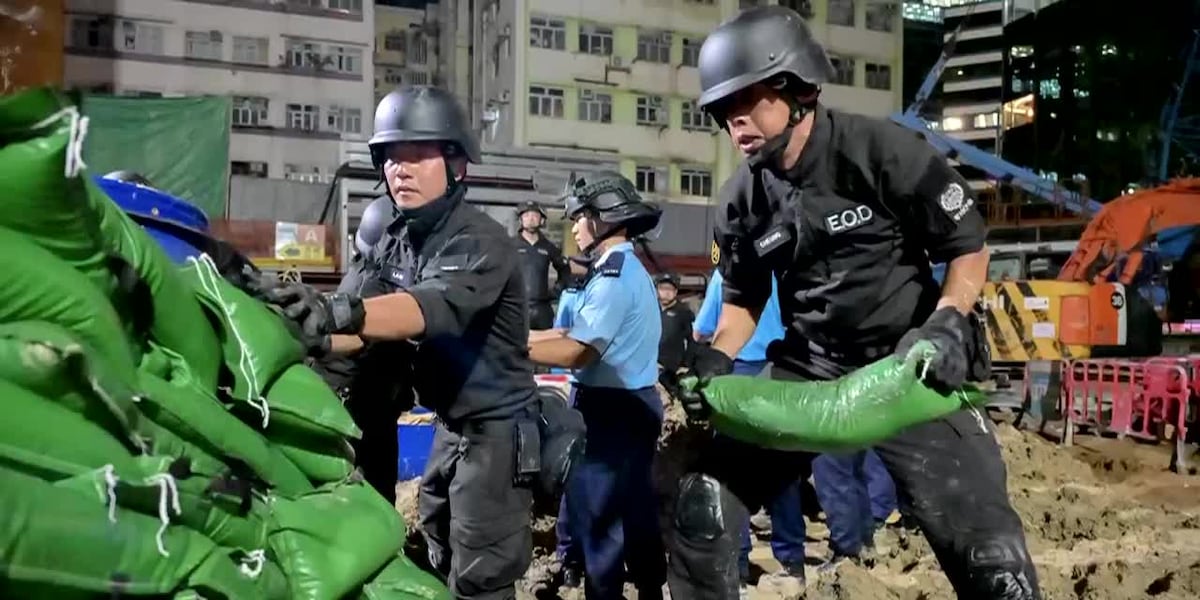Could a WWII Bomb in Hong Kong Force Thousands to Evacuate?

Published: 2025-09-20 08:40:31 | Category: Trump GNEWS Search
In a recent operation in Hong Kong, thousands were evacuated to safely defuse a large World War II-era bomb discovered at a construction site. The bomb, measuring 1.5 metres (5 feet) and weighing about 1,000 pounds (450 kilograms), posed significant risks during its disposal, necessitating the swift evacuation of nearly 6,000 residents from 1,900 households.
Last updated: 21 October 2023 (BST)
Understanding the Historical Context of World War II Bombs in Hong Kong
Hong Kong's complex history during World War II has left a lingering legacy, with unexploded ordnance (UXO) occasionally surfacing as reminders of the past. The recent discovery of a large bomb in Quarry Bay highlights the ongoing risks associated with these remnants of conflict.
Key Takeaways
- Approximately 1,900 households were evacuated due to the bomb threat.
- The bomb was a U.S.-made device from World War II, weighing 1,000 pounds (450 kg).
- No injuries were reported during the disposal operation.
- Bombs from the war are still periodically found in Hong Kong.
- The historical context involves Japanese occupation and Allied air raids.
The Discovery and Disposal Operation
The bomb was uncovered by construction workers in Quarry Bay, a busy area known for its mix of residential and commercial buildings. Upon its discovery, police swiftly confirmed its identity as a World War II bomb, leading to an urgent evacuation order for those living nearby.
Andy Chan Tin-Chu, a police official, emphasised the potential dangers involved. “Due to the exceptionally high risks associated with its disposal,” he stated, “we urged the residents to evacuate swiftly.” This precautionary measure ensured the safety of the community during the operation.
Details of the Bomb and Its Risks
The bomb in question was significant not only for its size but also for its potential lethality. Weighing approximately 1,000 pounds, such devices can contain a large quantity of explosive material, making them dangerous even decades after they were manufactured. The disposal process required teams of experts trained in bomb disposal to manage the operation effectively and safely.
The operation commenced late Friday and continued until around 11:30 a.m. on Saturday. Fortunately, the defusal was successful, and no injuries occurred, showcasing the skills and preparation of the bomb disposal teams.
Historical Significance of UXO in Hong Kong
Hong Kong's strategic location during World War II made it a target for various military operations. The city was occupied by Japanese forces, and the subsequent Allied air raids aimed to disrupt Japanese supply lines and infrastructure. This military activity resulted in numerous bombs being dropped over the region, many of which failed to detonate and remain buried beneath the surface.
According to local authorities, these types of discoveries are not uncommon. They sporadically emerge during construction or excavation works, prompting immediate safety measures to mitigate risks to residents and workers.
Lessons from Past Incidents
The recent operation serves as a reminder of the importance of preparedness and public safety in urban environments with complex historical backgrounds. Past incidents have illustrated the necessity for construction teams to maintain vigilance when excavating sites with a potential history of military activity.
Additionally, local government bodies continually update their protocols for handling such situations, ensuring that they can respond swiftly and efficiently when unexploded ordnance is found.
The Ongoing Risk of World War II Ordnance
Despite the passage of time, the presence of World War II ordnance remains a concern in various parts of the world, including Hong Kong. The risk of encountering such bombs is particularly high in areas that were heavily bombed during the war. Efforts to educate the public about the dangers posed by unexploded ordnance are crucial in preventing accidents.
Residents are advised to report any suspicious finds to the authorities immediately. The local police and bomb disposal units have established clear protocols to ensure that such incidents are handled safely and with minimal disruption to the public.
What Happens Next?
Following the successful disposal of the bomb, authorities will likely continue monitoring construction sites across the city. Moreover, ongoing public awareness campaigns are expected to reinforce safety measures and educate residents about the historical context of these discoveries.
The government is also likely to conduct reviews of existing construction regulations to ensure that safety measures remain robust and effective in preventing accidents related to WWII ordnance.
FAQs
What should I do if I find a suspected bomb?
If you encounter a suspected bomb or unexploded ordnance, do not approach it. Evacuate the area immediately and contact local authorities to report your find.
How common are World War II bombs found in Hong Kong?
Discoveries of World War II bombs in Hong Kong are relatively common, particularly in areas previously affected by military operations. Authorities regularly handle such incidents, ensuring public safety.
What safety measures are in place for bomb disposal operations?
Bomb disposal operations are conducted by trained experts equipped with the necessary tools and safety gear. Evacuations are typically ordered for nearby residents to ensure their safety during the operation.
Are there any historical sites affected by unexploded ordnance?
Many historical sites in Hong Kong may contain unexploded ordnance due to the city’s military history. Construction activities in these areas are closely monitored by local authorities to mitigate risks.
How does the government educate the public about unexploded ordnance?
The government conducts awareness campaigns, provides information through various channels, and collaborates with local organisations to educate the public about the risks associated with unexploded ordnance.
As Hong Kong continues to navigate its historical legacy, the need for vigilance regarding unexploded ordnance remains crucial. How prepared are we to handle these remnants of history, and what further measures can be taken to ensure public safety? #HongKong #WorldWarII #PublicSafety



